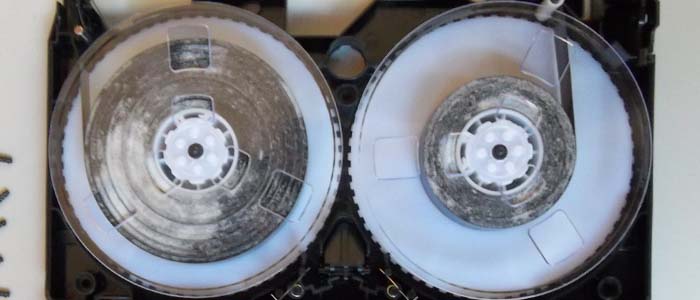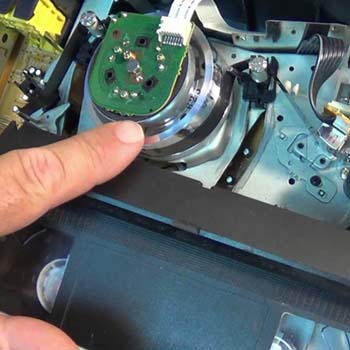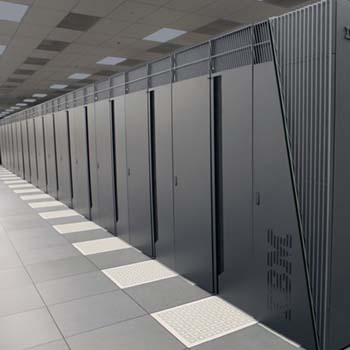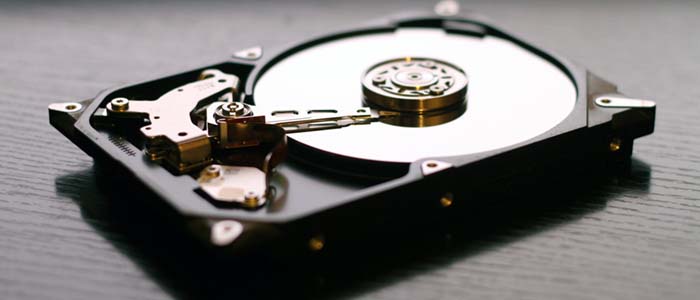
Azure Production have been transferring videos for over a eighteen years. We have received many formats such as VHS, Hi8 and film in various conditions. The most popular service is to transfer VHS to digital formats at the highest quality possible. Before your transfer begins, we inspect the tape’s integrity, approximately 10% of the tapes we receive are in need of repairs, or cleaning. Sometimes we see mold built up around the spool, or damaged cases. (Fig. 1)
Most magnetic tapes can last a very long time. We still get tapes dated back from the mid 1980s that are still in good condition. For films dated back in the 1950s, we notice that most are still in good condition, but some are starting to become brittle. The oldest film we’ve transferred was dated back in 1911 in fair condition. Below are some ways to prolong further damage.

3 Ways to Prolong Deterioration:
1. Keep it Cool! – Always try to keep you tapes in a cool dry place. High humidity increases the probability of mold being built up on the magnetic tape. Do not store your tapes in the basement, attic, car, or boat (yes a boat, I’ve seen it happen!). Temperature fluctuations will damage the tape over long periods of time.
For film, the smell of vinegar are signs of problems. The molecules that make up the film is starting to change. Transfer them immediately, or store the films in a different area.
2. Sizzling UV Rays – We have encountered tapes that were stuck together at a certain part of the spool. If your tapes were stored under sun light at some point, the UV rays may melt a small portion of the magnetic tape and can cause them to stick on top of each other. This repair is the most time consuming as the tape needs to be gently spooled by hand to the other reel so it detaches from the part that is sticking. Sometimes the magnetic tape fails to hold itself and snaps apart. Usually, we are able to repair this segment, however, you will be loosing several seconds of video.
Tape sticking tends to happen mostly on 8mm video tapes probably because the camcorder was stored in a hot environment during a vacation for example a car where the tape slightly glued itself together due to melting.
Film sticking to each other does not seem to happen, however, keep them away from UV rays as well.
3. Magnetic Deterioration – Do not touch the magnetic tape, oil from your fingers will stick onto the tape causing poor playback results and increases further deterioration. More importantly, do not watch the VHS tapes if you can avoid it. During playback, the tape runs through a mechanism in the VCR machine called a “head” (Fig. 2). The head rubs against the magnetic tape like a sand paper belt shaving skin off your hand. The more you watch the tape, the longer it is exposed to the rubbing, thus the further it deteriorates the tape and adds dirt and grime onto the machine head.
That is why we clean our heads often to give you the best picture quality possible during a transfer. We also do not rewind the tape in order to reduce rubbing. When we see technical anomalies we will only then run the tape on another machine to solve it’s problem.
For film transfers we try to pass the film through the machine once and fix any issues digitally in post production. We also have a LED projection bulb installed on our machine so if the film is stuck, it will not burn the strip.

Solutions for Digital Storage:
Once your videos have been successfully converted into digital or DVD, it is highly recommended that you continue to maintain your media in good condition. Overtime, hard drives and DVDs also deteriorate. For DVDs, continue to store them in a dry cool place away from sunlight. In DVDs, the laser does not physically make contact with the disc, thus it will not cause damage by continuous viewing, however it’s best to make several copies of the disc.
For digital, you should copy the video files onto a server. A server are a series of hard drives stacked together, the server can be scheduled so that the information can be backed up onto another drive continuously should one fail. Consumer servers costs several thousands of dollars for one location to setup, while commercial clients will have several physical servers located in another building in case of a fire or environmental disaster. Commercial servers can take up an entire warehouse as each server contains many hard drives (Fig. 3). More on computer servers >>
Another option is to upload your information onto the internet, such as Amazon Cloud AWS, or Google Drive (We are not affiliated with them). These companies have many servers set up all around the world. If one of their buildings encounters a disaster, your information is always continuously backed up automatically onto several locations around the globe. Their servers consists of high levels of data encryption technology so that your privacy is protected. Large companies such as AirBnB, Adobe, General Electric uses AWS‘s services. There is a monthly fee for this service.
The final option is the most economical, but it can be time consuming. A consumer can back up their family videos onto several external hard drives. An external 8TB hard drive is approximately $175 in 2018 (Fig. 4) You can continue to purchase hard drives as your family’s video collection grows and manually back them up onto other drives throughout time. You should place one of your drives in the bank’s safe in case there is a residential fire or a disaster. TD Canada Trust All Inclusive Account gives you a free safety deposit box so you can consider storing your drives there (We are not affiliated with them). Each hour of video takes up approximately 13GB of space at 30mbps for AVI or MOV files.

Future Preservation
Families are recording more videos over the decades so it’s important to be organized. I hope this answers some of the questions regarding media storage and long term archiving strategies. Your family videos are irreplaceable, it’s important to let your future generations know about your family’s stories and where you have come from. Contact us if you have any questions or if you’d like to get started with video transfers.
